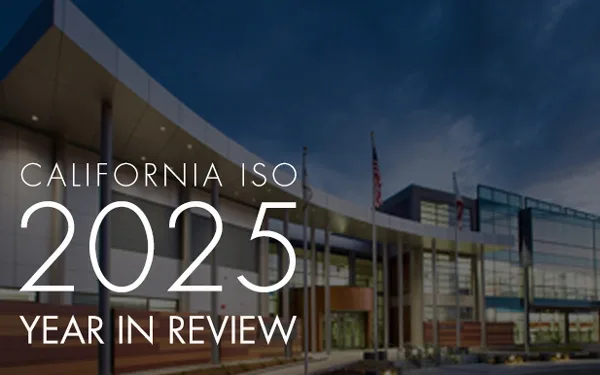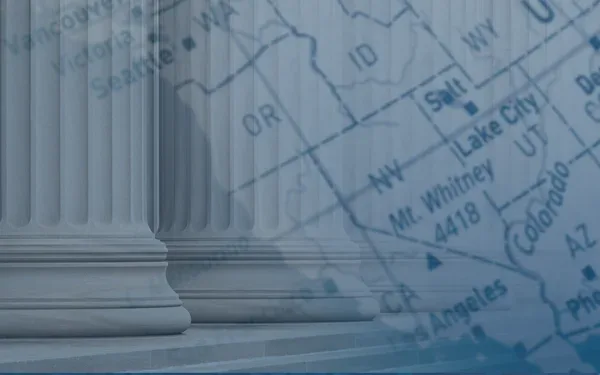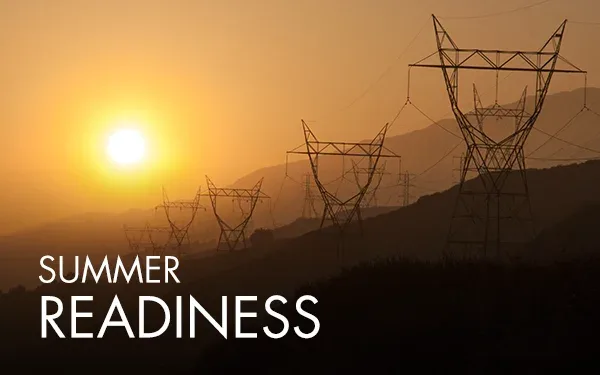Grid update at Capitol includes sharp focus on transmission
California ISO President and CEO Elliot Mainzer testified on Wednesday Aug. 25, 2021 at the Oversight hearing of the Senate Standing Committee on Energy, Utilities and Communications.
He was joined by Marybel Batjer, president of the California Public Utilities Commission; and Siva Gunda, of the California Energy Commission.
Here are Mainzer’s opening remarks, as prepared for delivery:
Chair Hueso, Vice Chair Dahle, members - good afternoon and thank you for the opportunity to appear before you to speak about the reliability of our electrical grid. I have had the pleasure of meeting some of you over the past year but this is my first time appearing before this committee, and I appreciate joining you today.
As a native of San Francisco, I know how much you and the people of our state care about combatting climate change and about having access to reliable and affordable energy.
As you may know, earlier in the year when I was asked about our summer readiness, I expressed guarded optimism that the additional procurement and other changes we had put in place in advance of the summer had positioned us better than last year. But as we have seen over the last several months with additional record high temperatures, unprecedented wildfires, persistent drought and declining hydro conditions, we clearly have moved into a new normal that required extraordinary actions to balance electricity supply and demand and maintain reliability for Californians.
During the first week of July, in coordination with the CPUC and CEC, the ISO triggered what is known as our backstop procurement authority. That is essentially an emergency mechanism that allows us to directly procure energy when there have been significant changes in the underlying assumptions behind the state’s resource adequacy planning. Using that authority, we went into the market and were able to secure approximately 624MW of power for the month of July, 650MW for the month of August and 67MW for the month of September.
The extra capacity has been helpful. But even with these additional resources we still found ourselves in the middle of extremely challenging grid conditions culminating on July 9 when the Bootleg fire in Oregon effectively cut off the majority of the power supply from the Pacific Northwest into California.
Given that conditions were continuing to deteriorate and becoming increasingly unpredictable, we appreciated Gov. Newsom’s Emergency Proclamation issued on July 30. The steps he took will give us access to new tools which we will of course only be using under the most stressed grid conditions, such as access to additional backup generation. The new demand response tools being developed by the state will also provide some relief during extremely stressed grid conditions.
We appreciate the sense of urgency and decisiveness by the Governor because although we are now about two-thirds of the way through the summer, we know that extremely stressed grid conditions can play out again in the weeks and months ahead. And we of course need to be prepared while the state takes on the additional task of bringing new capacity onto our grid to solve the challenging net peak issues that occur for us after sunset.
Along with the CPUC and the CEC, the ISO remains extremely focused on doing everything we can to make sure we can bring those resources onto the grid on both the supply side and the demand side in the months and years ahead. That way, we can take our grid away from the edge when extreme weather or other factors strain the system and restore a more healthy reserve margin for the state.
I want to tell you briefly about two areas that will be a major focus for the ISO in getting this done. First, we have identified a set of specific locations on the transmission grid where there is existing capacity that can be utilized in the short term to bring additional resources onto the system, particularly battery storage, which can be very helpful in dealing with the net peak operational challenges that California faces.
And over the longer term, through our newly launched 20-year transmission outlook process, we intend to provide specific and actionable transmission recommendations for the CEC and CPUC to guide procurement in the years ahead to help California meet its SB 100 goals.
It is absolutely essential for state policy makers and utilities to achieve as much alignment as possible about the critical need for transmission to help California meet those clean energy goals. I believe I can say unequivocally that additional transmission, including in-state, offshore and out of state, will be indispensable in enabling California to meet its long-term decarbonization goals. Transmission development requires long lead times so we must accelerate our actions now to be prepared for clean energy development requirements in the years ahead.
Finally, I wanted to acknowledge that at the ISO, we are very motivated to play a very constructive role in further enabling demand response and distributed energy resources to be a more significant part of California’s electricity portfolio and strategy. We are encouraged by the work happening at both the CPUC and the CEC on these topics and stand ready to be a supportive partner in making sure these resources play a major role in California’s energy future. All of us at the ISO stand ready to do everything we can to help the state meet its clean energy objectives in a reliable and affordable fashion.
Thank you Chair Hueso and committee members for your attentiveness on these critical issues and the opportunity to provide this update today. I believe this concludes our opening statements, and we are all happy to answer any questions the committee may have.


